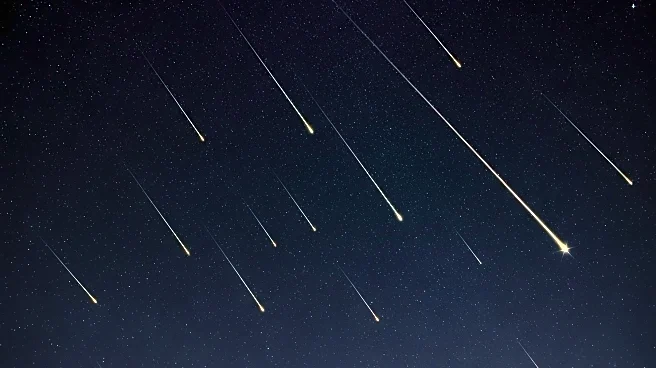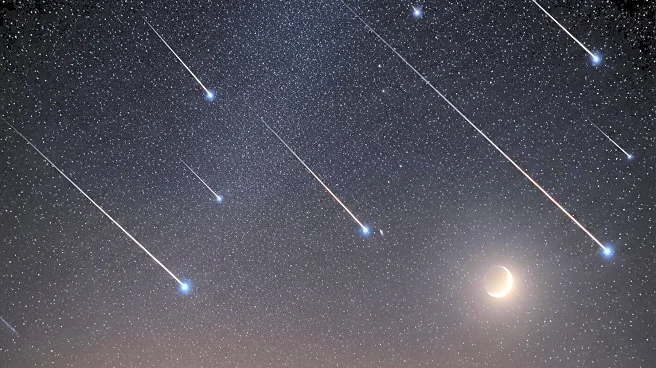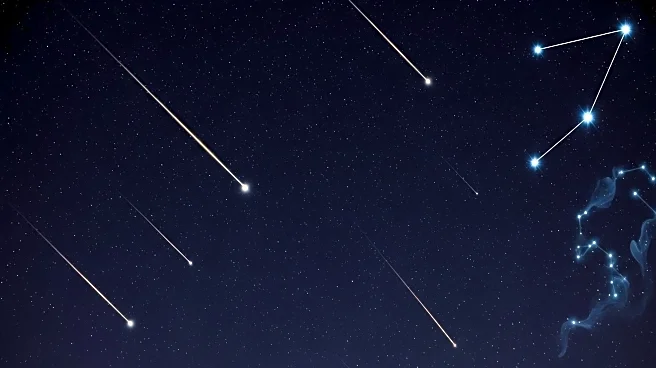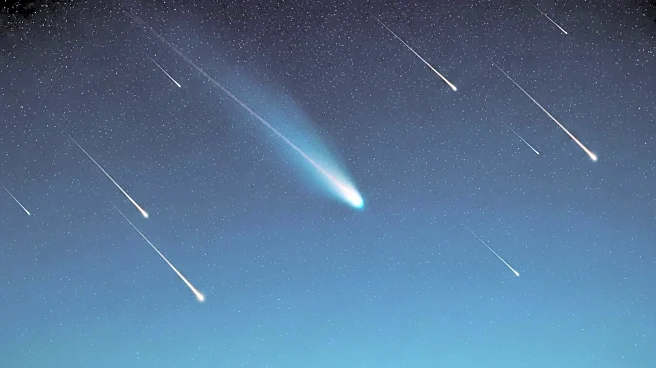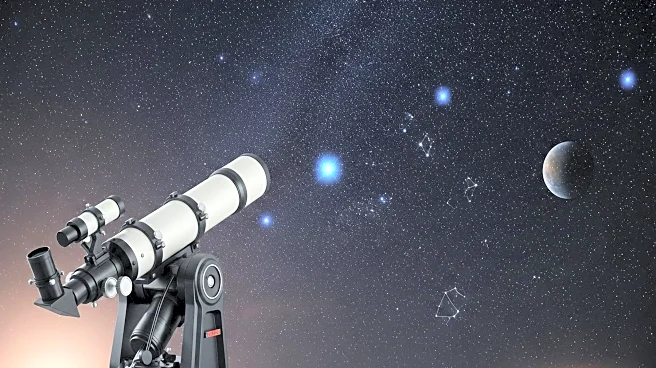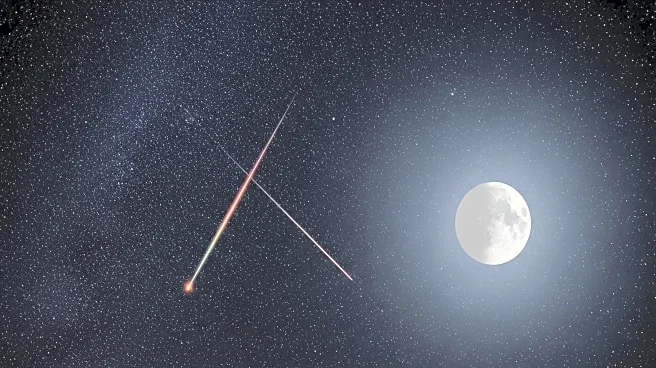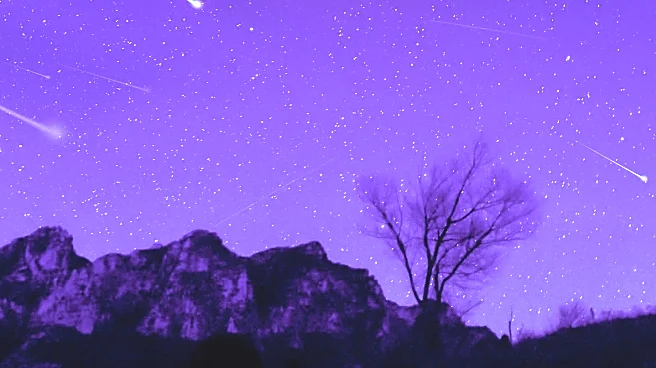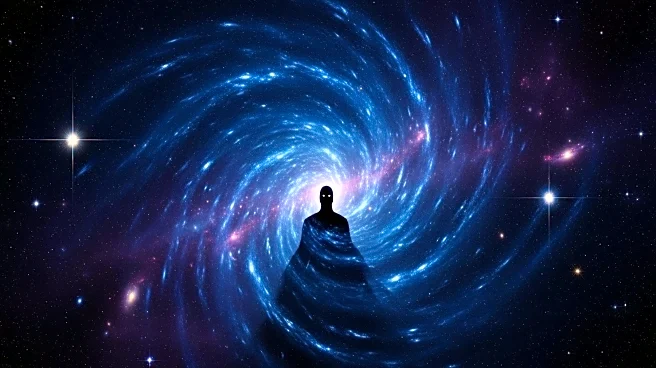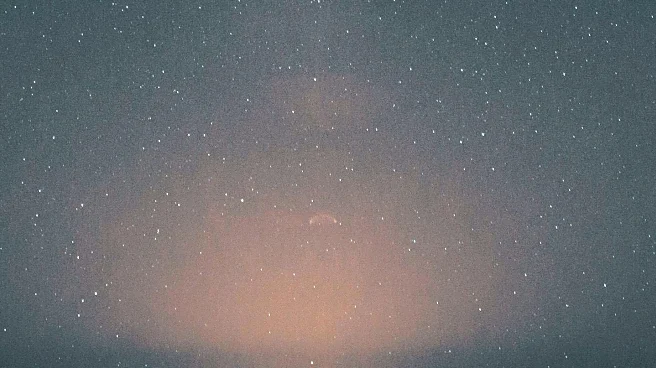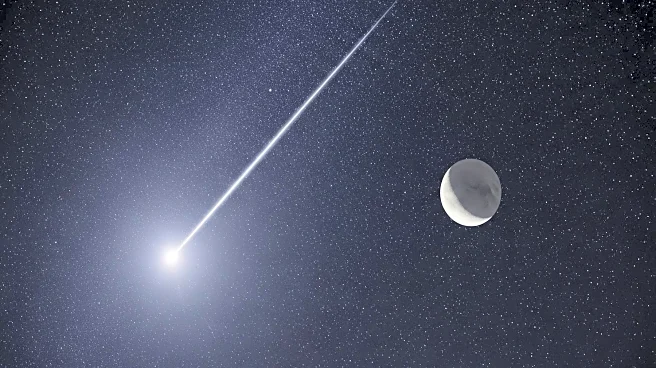What's Happening?
The Orionid meteor shower, which occurs annually when Earth passes through debris left by Halley's Comet, is set to peak overnight on October 20-21, 2025. This year, the shower will be visible under a moonless sky, providing optimal conditions for stargazers. The Orionids are known for their fast-moving meteors, which can reach speeds of 41 miles per second, and often leave glowing trails that linger in the sky. During the peak, observers can expect to see 10-20 meteors per hour, with the possibility of witnessing spectacular fireballs that outshine the brightest planets.
Why It's Important?
The Orionid meteor shower is a significant event for astronomy enthusiasts and provides an opportunity for the public to engage with celestial phenomena. The absence of moonlight during the peak enhances visibility, making it an ideal time for educational outreach and public stargazing events. This natural spectacle not only fosters interest in astronomy but also encourages people to explore the night sky, potentially inspiring future scientists and astronomers.
What's Next?
As the peak approaches, stargazers are advised to find locations away from city lights to maximize their viewing experience. The best time to observe the Orionids is in the predawn hours of October 21, when the radiant point in the constellation Orion is high above the southern horizon. Observers should allow their eyes to adjust to the darkness for about 30 minutes to enhance their chances of seeing the meteors.
Beyond the Headlines
Meteor showers like the Orionids offer a reminder of the dynamic nature of our solar system and the ongoing interactions between celestial bodies. The debris from Halley's Comet, which causes the Orionids, highlights the long-term impact of comets on Earth's atmosphere and the potential for future scientific discoveries related to these ancient objects.
